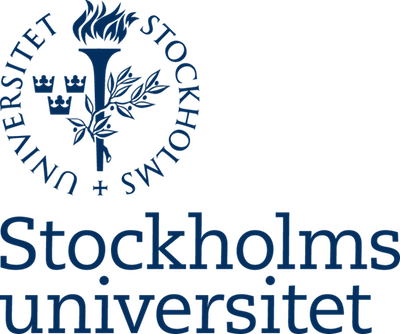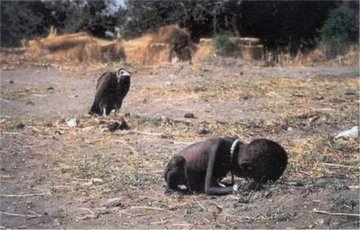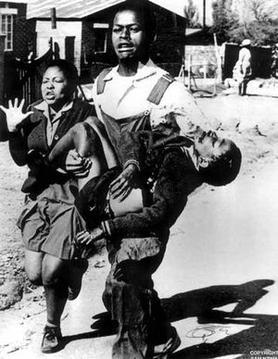7 minute read
Bearing Witness: What Are Journalists Doing in Conflict Zones?
by Richard Stupart and Katherine Furman
“Perhaps the only people with the right to look at images of suffering… are those who could do something to alleviate it – say, the surgeons at the military hospital where the photograph was taken – or those who would learn from it. The rest of us are voyeurs, whether or not we mean to be.” Sontag, 2003
What, morally speaking, are journalists doing in conflicts? They aren’t medics or aid workers, and they don’t have anything to distribute to those in desperate need. So, is their role simply to observe suffering? If so, observing isn’t itself morally good, or even morally neutral – think of the voyeur. And yet we have a nagging intuition that Sontag is wrong and the work of journalists covering human rights abuses and conflict is morally important. Can something about practices of observing suffering in fact justify them?
The ethically ambiguous position of the journalist is most famously illustrated by Kevin Carter’s Pulitzer Prize winning photograph (below). In it, a vulture stands over a starving child in the town of Ayod during the 1993 famine in Sudan. It is a matter of historical controversy whether Carter did anything to help the child (after a brief delay, he said he chased the vulture away and watched the child resume her trip to the aid station). Regardless, many journalists do observe without intervening, or take intervention to be something extra – a moral reflex that has nothing to say about whether recording the suffering of others is justified.
So, what does make observing the pain of others acceptable? One way to start thinking about what justifies the presence of journalists in situations of severe suffering is to ask them directly. This is reminiscent of J.L. Austen’s How to Do Things with Words (1962), in which he argues that when trying to understand a word a philosopher should first look at its ordinary use. This good advice on understanding words extends to practices. Richard Stupart (co-author of this blog post) has been doing exactly this in his research. This is what one journalist told him when asked about their presence in contexts of suffering:
… I can’t think of anything worse than something terrible happening in the world and nobody else knowing about it. Or… it being forgotten in history where there being no record of it… I can’t think of anything more unjust than someone, or a group of people, or whoever, having to go through something really terrible and no-one else knowing about it. And that’s where I think that whole concept of bearing witness is really important…. And I know it’s a phrase that my colleagues use quite a lot as a way of justifying their work, but I, I sincerely believe it. I really think it’s important. And, you know, a photo’s not going to save the world, by any stretch of the imagination, but I would rather live in a world where there is that photo, than where there isn’t.
The journalist indicates that ‘bearing witness’ is the moral good that journalists do in conflict zones. But how might we make sense of the term?
Philosophers of science and social epistemologists have long told us that we rely on a division of epistemic labour.[1] No one person can know everything that is worth knowing, so we divide the epistemic tasks between us. You learn the theoretical physics, I learn the biographical details of reality television stars, and between us we will have access to everything worth knowing. Journalists who venture into sites of conflict and suffering form an important part of our collective knowledge production, and one which important to the rest of us as moral agents.
It is clear that there are morally relevant events occurring in parts of the world that most of us simply don’t have access to firsthand. Hundreds of thousands dead in South Sudan. Mass displacement in Democratic Republic of Congo. China’s mass incarceration of its Muslim citizens. It is important that we know what is going on in these places, because they require moral action from us. Do we need to participate in sanctions against an oppressive regime? Do we need to put pressure on our own governments to act in particular ways against offending countries and their elites? In order to do the morally right thing, we need information about parts of the world that we are unlikely to ever visit ourselves. This is what justifies the work of such journalists. They go to these places to bear witness to such events and report back to us morally relevant information that could not be obtained otherwise.
Historically, there are examples of this process being extremely effective. Sam Nzima’s image of Hector Pieterson (below) is one such instance. This was taken at the Soweto Uprising (16 June 1976) in South Africa, at which school children protested against the oppressive language policy that formed part of the racist apartheid regime. Hector Pieterson, aged 13, was shot by the police. The photo shows his friend carrying his body to a car to rush him to the hospital where he was later declared dead. Nzima’s photograph was published internationally and its circulation is often credited with helping turn international moral opinion against the apartheid state and the introduction of sanctions that ultimately broke the economic back of a racist regime. This photo did morally important work.
But Nzima’s photograph is an outlier. It would be great if every photograph taken at a site of suffering could perform such transformative work, but virtually none do. Yet if the photograph of Hector Pieterson is a once-in-a-generation event, what should we think about all the photographers and the photographs that don’t change the world?
Many accounts from sites of suffering, even if not politically transformative, deprive those of us who see them from any defence of innocence-through-ignorance that we might have had had those accounts not existed. One example of this is the image of Alan Kurdi, the Syrian child who drowned at sea in 2015 as he and his family tried to reach European shores on their way to Canada. While the refugee crisis still looms large, refugees continue to die at sea and the European public, by and large, do nothing, the publication of this photograph denied any excuse through ignorance that we might have for inaction. We can no longer claim to not know about the plight of refugees and the harms that they suffer in their efforts to reach safety. In this case, the journalist-as-witness has shifted the moral burden to us to act.
But what about photographs that aren’t politically transformative, or even able to take away our excuses from ignorance? What about the photographs, the mobile phone video, the detailed fieldnotes that never even get published? Perhaps they were taken at the wrong point in the news cycle (e.g. Trump’s America has detracted awfully from our willingness to see the rest of the world) or editors decided that they were too violent for the tastes of the general public. These photographs have no chance of changing the world, or providing us with morally relevant information about faraway places. Yet even in these cases, it still seems intuitively preferable that the journalist be there than not. To revisit the account of Stupart’s respondent: “I can’t think of anything more unjust than someone, or a group of people…having to go through something really terrible and no-one else knowing about it”. Even in such cases, the record matters. It may hold open the possibility of future justice that would otherwise be foreclosed, as thousands of images and pages of collected testimony have come back from private archives to haunt the later years of the Pinochets and Eichmanns of the world. The existence of a record denies perpetrators of atrocities a final, epistemic victory in which both victim and crime disappear from the world.
So, to return to Sontag, those who are not able assist directly may still have a moral function as witnesses. Testifying about atrocities to the rest of us who cannot be there may be what separates the voyeur from the witness – an act that moves Sontag’s observer towards a position of defying perpetrators, rather than silent complicity with their deeds.
[1] Golberg, S, (2011). The Division of Epistemic Labour. Episteme, 8(1), 112 – 125; Kitcher, P (2011) Science in a Democratic Society. New York: Prometheus Books.
Disclaimer: Any views or opinions expressed on The Ethical War Blog are solely those of the post author(s) and not The Stockholm Centre for the Ethics of War and Peace, Stockholm University, the Wallenberg Foundation, or the staff of those organisations.





Comments are closed.